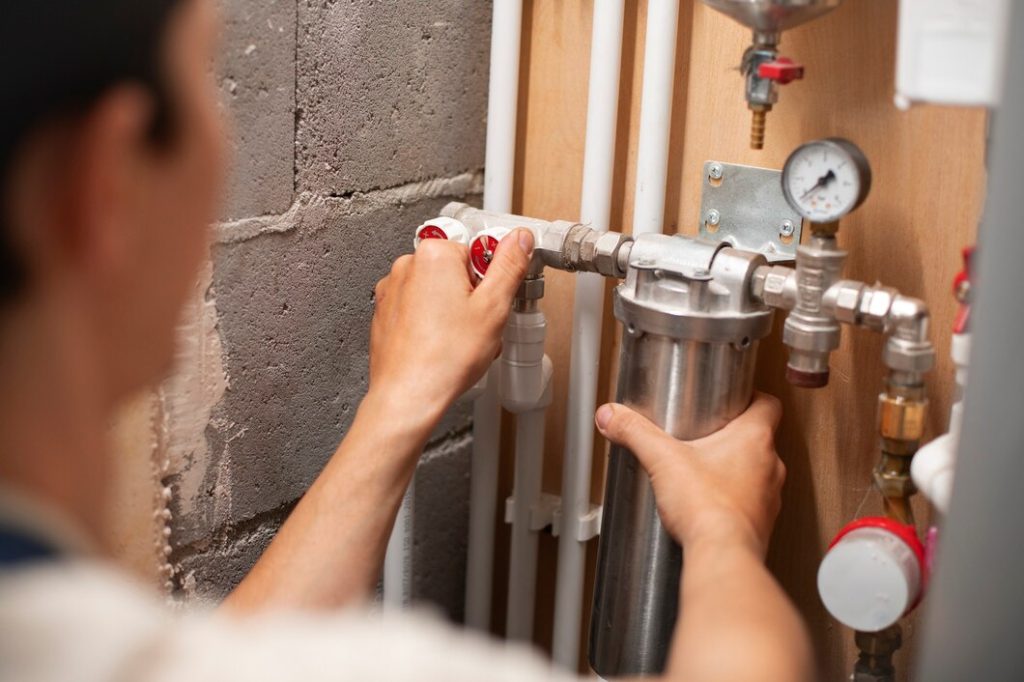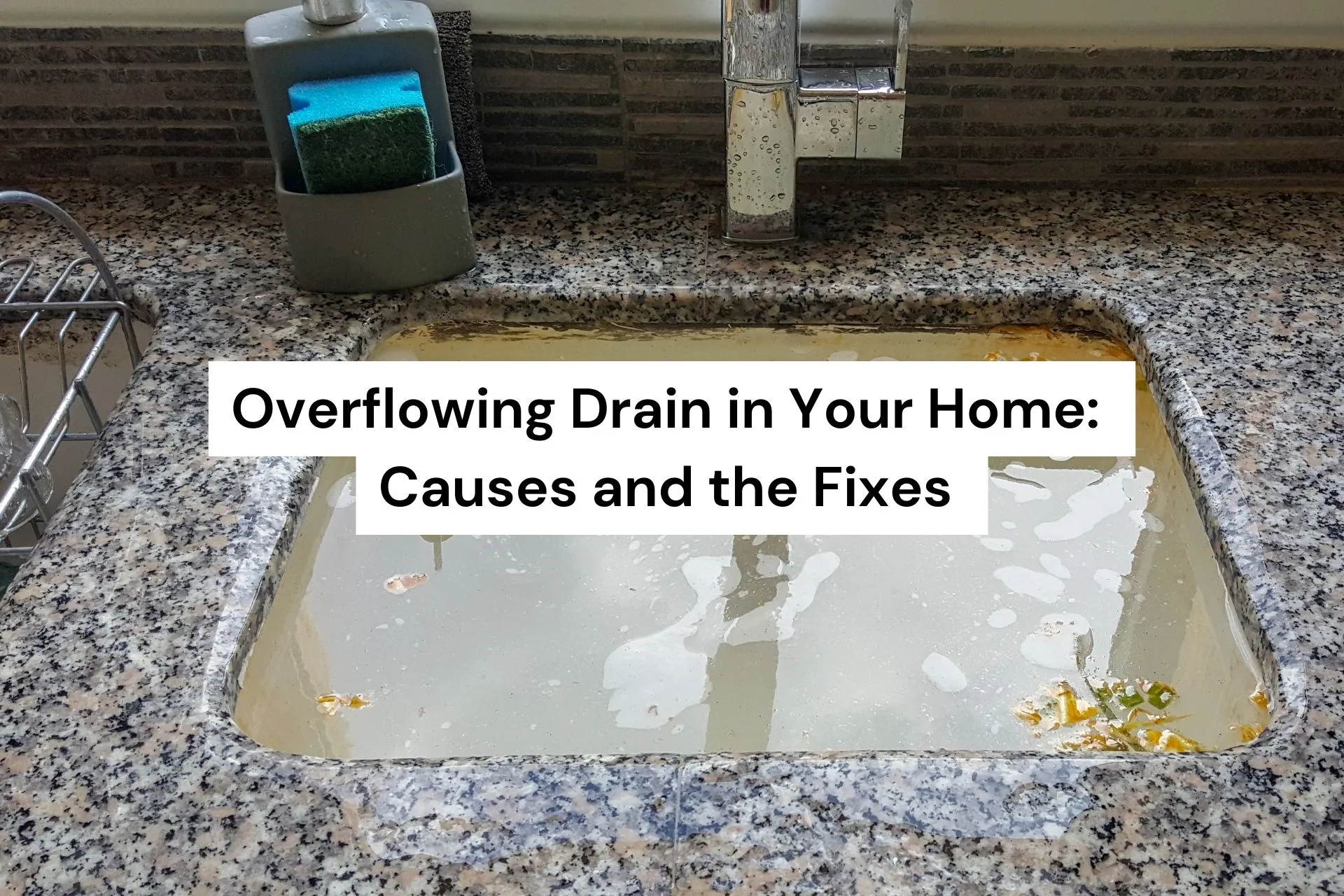
Are you tired of dealing with a smelly drain in the bathroom? It’s not just the air that’s affected—your comfort and health are at risk too. Every day, you find yourself wondering when everything started to go wrong.
Maybe you’re wondering how to get rid of the smelly drain in your bathroom. As a responsible homeowner, you believe there’s a solution. Beyond just a blocked drain, let’s explore the root causes of smelly bathroom drains before browsing a “small job plumber near me” to get professional help.
Table of Contents
The Causes of Smelly Drains in the Bathroom: 7 Possible Culprits

There are several reasons why bathroom drains smell, and understanding these causes can help you address the problem effectively.
Here are some common reasons:
1. Bacterial Growth
Shower mould and bacterial growth in the pipes often cause drain smells in the bathroom.
When debris like hair and soap residues accumulates, it can lead to an overflowing drain and unpleasant odours. This can result in the gurgling drain sounds as trapped gases escape.
To combat this, regularly pour boiling water down the drain to dissolve the mould growth and eliminate bacteria. Ensuring proper ventilation and keeping the bathroom dry can also prevent mould growth, maintaining a fresher environment.
2. Dry P-Trap
The P-trap is a U-shaped pipe beneath the sink or shower drain that holds water to create a seal, preventing sewer gases from entering the bathroom.
If a bathroom fixture is not used frequently, the water in the P-trap can evaporate, breaking the seal and allowing sewer gases to escape which then leads to a smelly drain bathroom.
To resolve this, ensure that the water flows through the drains smoothly to keep the P-trap filled and functional.
3. Mould and Mildew
Bathrooms are prone to high humidity levels, making them an ideal environment for mould and mildew growth.
Shower mould can accumulate not just on the surface of tiles and grout but also within the drain itself. Mould and mildew produce musty smells that can permeate the bathroom through the drains.
Regular cleaning and proper ventilation can help reduce the growth of mould and mildew. Additionally, using a dehumidifier or keeping the bathroom well-ventilated can help minimise humidity levels and prevent these issues.
4. Sewer Line Issues
Sometimes, the problem of smelly drains in the bathroom can be traced back to more significant issues with the sewer line.
If there is damage or a blockage in the sewer line, it can cause sewer gases to spread into the house. These gases can enter through the drains, leading to a strong and unpleasant bathroom drain smell.
In such cases, you might notice multiple drains in the house being affected simultaneously. Addressing sewer line issues often requires professional plumbing services to inspect and repair the damage.
5. Poor Ventilation
Poor ventilation in the bathroom allows moisture to build up, creating an ideal environment for mould and mildew to grow.
Shower mould not only thrives on walls and tiles but can also develop within the drains. This mould produces musty, unpleasant odours that contribute to a smelly bathroom drain.
Ensuring proper ventilation, such as using exhaust fans or opening windows, helps reduce humidity and prevent mould growth, keeping your drains smelling fresh.
6. Full Septic Tank
A full septic tank can cause a smell from bathroom as well. When the septic tank is full, it can’t properly process waste, leading to a backup of sewage gases.
These gases can escape through bathroom drains, causing a foul smell. Regular maintenance and timely septic tank emptying are crucial to prevent this issue and maintain a clean, odour-free bathroom.
7. A Damaged Toilet
A damaged toilet can be a significant cause of smell.
When the toilet’s seals, such as the wax ring or flange, are compromised, it allows sewer gases to escape. These gases seep into the bathroom, resulting in drain smelly drains.
Additionally, cracks in the toilet bowl or tank can lead to leaks, creating damp conditions that promote mould and bacterial growth that further contributes to unpleasant odours.
Regularly inspecting and maintaining your toilet, including promptly repairing any damage, is essential to prevent these issues and ensure a fresh-smelling bathroom.
How to Get Rid of Smelly Drain in Bathroom: 5 Proven Methods

Getting rid of a smelly drain involves a series of steps that range from simple DIY methods to professional interventions. Here are several effective strategies:
1. Pour Extremely Hot Water Down the Drain
One of the easiest and most immediate solutions is to pour extremely hot water down the drain. This helps dissolve soap scum, grease, and other debris that can cause odours. Boiling water can kill bacteria and loosen up mould build-up, providing a temporary fix to smelly drains.
However, it’s important to note that while hot water is effective, it should be used cautiously to avoid damaging PVC pipes.
2. Use a Combination of Baking Soda and Vinegar
A natural and eco-friendly method to tackle a smelly bathroom drain is to use a combination of baking soda and vinegar. Mix them in a 1:1 ratio, typically one cup for each.
First, pour the baking soda down the drain, followed by the vinegar. The mixture will fizz and bubble, which helps break down organic matter and clean the pipe walls.
After about 15-20 minutes, flush the drain with hot water to wash away the loosened debris. This method not only removes odours but also helps maintain a clean drain.
3. Use a Plunger
If the smell is due to a blockage causing an overflowing drain, a plunger can be an effective tool.
Place the plunger over the drain to create a tight seal. Pump the plunger up and down vigorously to dislodge the blockage. This process can help remove trapped debris that is contributing to the smell, restoring proper drainage and reducing odours.
4. Get an Actual Drain Cleanser
Commercial drain cleaners are specifically formulated to dissolve clogs and eliminate odours. Follow the instructions on the product carefully, as these cleaners often contain strong chemicals.
Pour the cleaner down the drain and allow it to settle per the suggested time on the table before flushing it with water.
Cleaning products can be highly effective but should be used sparingly to avoid damaging pipes and harming the environment.
5. Unclog with a Coat Hanger
For a more hands-on approach, you can use a straightened coat hanger to manually remove blockages. Bend a coat hanger so that you have a small hook on one end. Carefully insert it into the drain and fish out any hair, soap scum, or other debris. This method can be particularly effective for shower drains that are prone to hair clogs.
Additionally, removing physical blockages can significantly reduce smells caused by trapped decomposing matter.
6. Call for Professional Help
If all else fails and the smell persists, it may be time to call for professional help.
Plumbers have the tools and expertise to diagnose and fix more serious issues, such as deep blockages, damaged pipes, or sewer line problems.
Professional intervention ensures a thorough cleaning and proper maintenance of your plumbing system, effectively eliminating smelly drains.
A smelly bathroom drain can result from poor ventilation, a full septic tank, or a damaged toilet. Knowing how to get rid of smelly drain in bathroom, from using hot water and baking soda to professional help, is essential.
For comprehensive solutions, trust the experts at Neighbourhood Plumbing & Heating.
Our skilled technicians handle everything from minor repairs to complete remodels with top-quality craftsmanship and clean finishes.
Contact Neighbourhood Plumbing & Heating for all your plumbing needs and enjoy a fresh, odour-free bathroom!
About the Author
From unclogging the toughest drains to repairing leaking toilets, Ricky is a seasoned plumber who has brought his craftmanship to homes across Melbourne. He is as passionate about sharing plumbing tips just as much as he is about fixing your plumbing issues. So, when your taps or pipes begin leaking, you know who to call.





